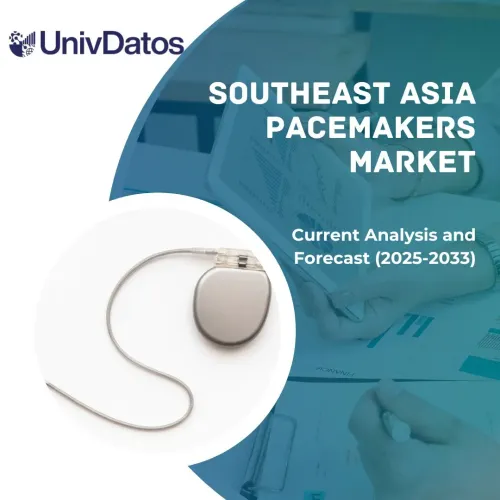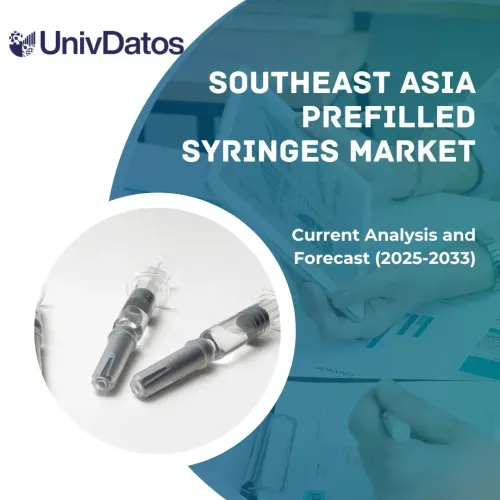- Home
- About Us
- Industry
- Services
- Reading
- Contact Us
Autism Spectrum Disorder Market: Current Analysis and Forecast (2024-2032)
Emphasis on Drug Class (Antipsychotic Drugs, SSRIs/Antidepressants, Stimulants, and Others); Type (Autistic Disorder, Asperger’s Syndrome, and Others); Distribution Channel (Hospital Pharmacies, Retail Pharmacies, and Online Pharmacies); and Region/Country
Global Autism Spectrum Disorder Market Size & Forecast
The global autism spectrum disorder market was valued at ~USD 30 billion in 2023 and is expected to grow at a strong CAGR of around ~4% during the forecast period (2024-2032) owing to the expansion of specialized educational programs and support services for individuals with autism boosts market growth.
Global Autism Spectrum Disorder Market Analysis
The market size of autism spectrum disorder across the globe is expanding because of several factors such as the development of new therapies, including behavioral therapies and medications, enhances treatment options for ASD, such as diabetes which will drive the growth of the market. Also advances in medical research and technology have led to the development of treatment options, which are gaining regulatory approvals and entering the market.
In November 2021, Yamo Pharmaceuticals, LLC, reported that The Autism Impact Fund had made a capital investment in Yamo to support a Phase II study of L1-79 in adolescents and adults with an autism spectrum disorder.
Global Autism Spectrum Disorder Market Trends
This section discusses the key market trends that are influencing the various segments of the global autism spectrum disorder market, as identified by our team of research experts.
Hospital Segment Transforming Industry
The antipsychotic drugs segment drives the autism spectrum disorder (ASD) market by addressing severe behavioral symptoms such as irritability and aggression. Medications like risperidone and aripiprazole, approved by the FDA for ASD, are crucial for managing these symptoms, leading to increased prescriptions and ongoing research. The demand for these drugs is bolstered by their effectiveness in improving patient quality of life and managing co-occurring conditions like anxiety. Continuous advancements in antipsychotic medications further stimulate the market, aiming to enhance efficacy and reduce side effects for ASD patients.
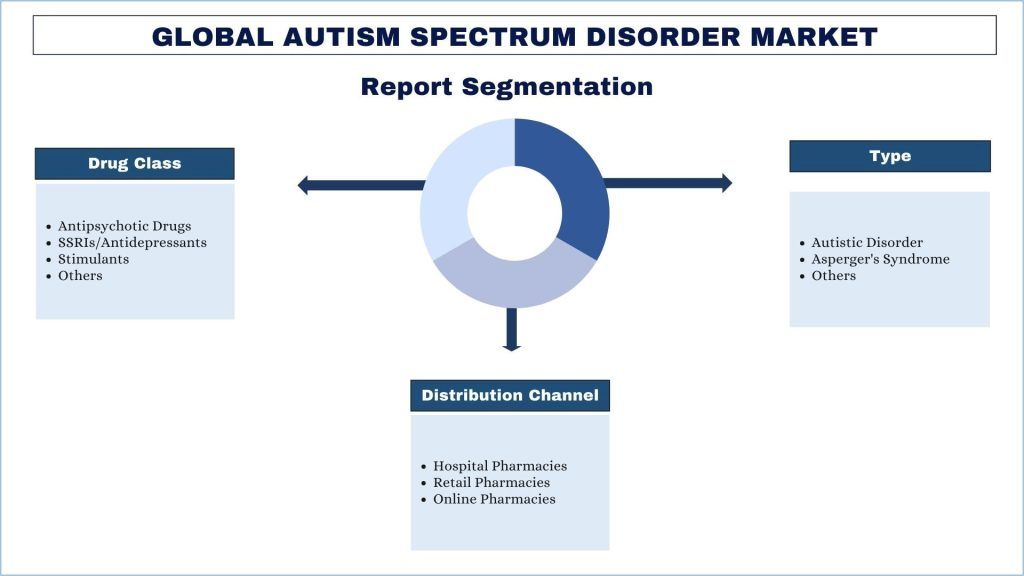
Asia-Pacific is Expected to Grow at a fastest CAGR During Forecast Period
The Asia-Pacific autism spectrum disorder (ASD) market is experiencing significant growth driven by increasing awareness, improving diagnosis rates, and expanding healthcare infrastructure across the region. Countries such as China, Japan, India, and South Korea are at the forefront due to the rising prevalence of ASD, bolstered by enhanced government initiatives and healthcare expenditures aimed at neurological disorders. Pharmaceutical companies are actively investing in research and development of novel therapies tailored to the region’s genetic and demographic diversity. Additionally, advancements in diagnostic tools and therapeutic interventions are expected to further drive market expansion, offering new opportunities for both local and international healthcare providers and stakeholders in the coming years.
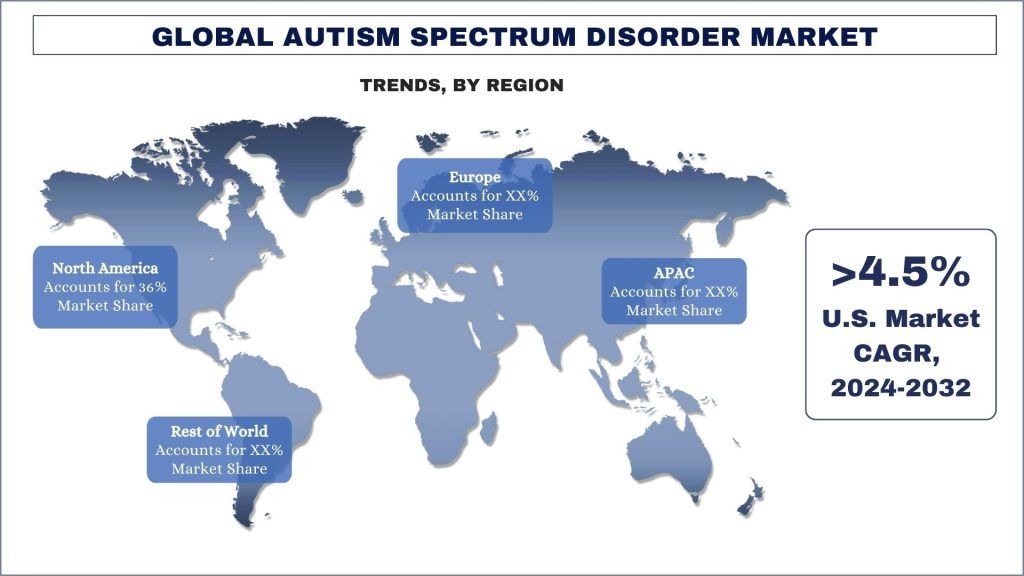
Global Autism Spectrum Disorder Industry Overview
The global autism spectrum disorder market is competitive, with several global and international market players. The key players are adopting different growth strategies to enhance their market presence, such as partnerships, agreements, collaborations, new type launches, geographical expansions, and mergers and acquisitions. Some of the major players operating in the market are F. Hoffmann-La Roche Ltd; Q BioMed Inc.; PaxMedica, Inc.; Yamo Pharmaceuticals; Otsuka Pharmaceutical Co., Ltd.; Curemark, LLC; Zynerba Pharmaceuticals, Inc.; Axial Therapeutics, Inc.; Novartis AG; STALICLA SA
Global Autism Spectrum Disorder Market Report Coverage
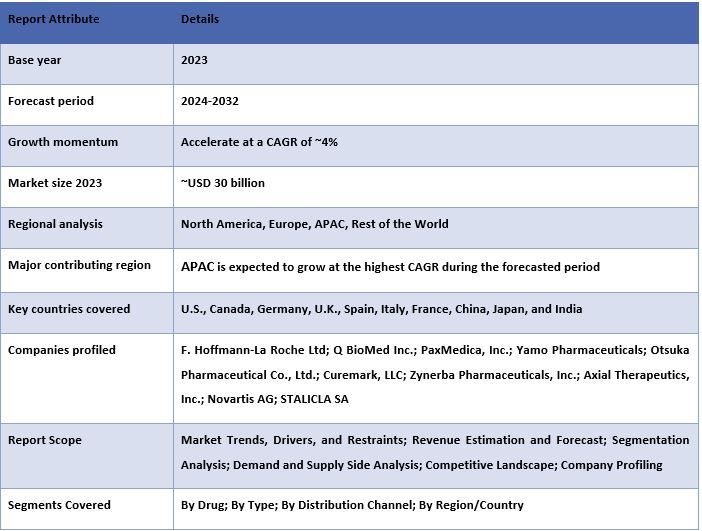
Reasons to buy this report:
- The study includes market sizing and forecasting analysis validated by authenticated key industry experts.
- The report presents a quick review of overall industry performance at one glance.
- The report covers an in-depth analysis of prominent industry peers with a primary focus on key business financials, type portfolios, expansion strategies, and recent developments.
- Detailed examination of drivers, restraints, key trends, and opportunities prevailing in the industry.
- The study comprehensively covers the market across different segments.
- Deep dive regional level analysis of the industry.
Customization Options:
The global autism spectrum disorder market can further be customized as per the requirement or any other market segment. Besides this, UMI understands that you may have your own business needs, hence feel free to contact us to get a report that completely suits your requirements.
Table of Content
Research Methodology for the Global Autism Spectrum Disorder Market Analysis (2024-2032)
Analyzing the historical market, estimating the current market, and forecasting the future market of the global autism spectrum disorder market were the three major steps undertaken to create and analyze the adoption of global autism spectrum disorder in major regions. Exhaustive secondary research was conducted to collect the historical market numbers and estimate the current market size. Secondly, to validate these insights, numerous findings and assumptions were taken into consideration. Moreover, exhaustive primary interviews were also conducted, with industry experts across the value chain of the global autism spectrum disorder market. Post assumption and validation of market numbers through primary interviews, we employed a top-down/bottom-up approach to forecasting the complete market size. Thereafter, market breakdown and data triangulation methods were adopted to estimate and analyze the market size of segments and sub-segments of the industry pertains to. Detailed methodology is explained below:
Analysis of Historical Market Size
Step 1: In-Depth Study of Secondary Sources:
A detailed secondary study was conducted to obtain the historical market size of the global Autism Spectrum Disorder market through company internal sources such as annual reports & financial statements, performance presentations, press releases, etc., and external sources including journals, news & articles, government publications, competitor publications, sector reports, third-party database, and other credible publications.
Step 2: Market Segmentation:
After obtaining the historical market size of the global autism spectrum disorder market, we conducted a detailed secondary analysis to gather historical market insights and share for different segments & sub-segments for major regions. Major segments are included in the report as drug class, type, distribution channel, and regions. Further country-level analyses were conducted to evaluate the overall adoption of testing models in that region.
Step 3: Factor Analysis:
After acquiring the historical market size of different segments and sub-segments, we conducted a detailed factor analysis to estimate the current market size of the global autism spectrum disorder market. Further, we conducted factor analysis using dependent and independent variables such as drug class, type, distribution channel, and regions of the global autism spectrum disorder market. A thorough analysis was conducted of demand and supply-side scenarios considering top partnerships, mergers and acquisitions, business expansion, and type launches in the global autism spectrum disorder market sector across the globe.
Current Market Size Estimate & Forecast
Current Market Sizing: Based on actionable insights from the above 3 steps, we arrived at the current market size, key players in the global autism spectrum disorder market, and market shares of the segments. All the required percentage shares split, and market breakdowns were determined using the above-mentioned secondary approach and were verified through primary interviews.
Estimation & Forecasting: For market estimation and forecast, weights were assigned to several factors including drivers & trends, restraints, and opportunities available for the stakeholders. After analyzing these factors, relevant forecasting techniques i.e., the top-down/bottom-up approach were applied to arrive at the market forecast for 2032 for different segments and sub-segments across the major markets globally. The research methodology adopted to estimate the market size encompasses:
- The industry’s market size, in terms of revenue (USD) and the adoption rate of the global autism spectrum disorder market across the major markets domestically
- All percentage shares, splits, and breakdowns of market segments and sub-segments
- Key players in the Global Autism Spectrum Disorder market in terms of types offered. Also, the growth strategies adopted by these players to compete in the fast-growing market
Market Size and Share Validation
Primary Research: In-depth interviews were conducted with the Key Opinion Leaders (KOLs) including Top Level Executives (CXO/VPs, Sales Head, Marketing Head, Operational Head, Regional Head, Country Head, etc.) across major regions. Primary research findings were then summarized, and statistical analysis was performed to prove the stated hypothesis. Inputs from primary research were consolidated with secondary findings, hence turning information into actionable insights.
Split of Primary Participants in Different Regions
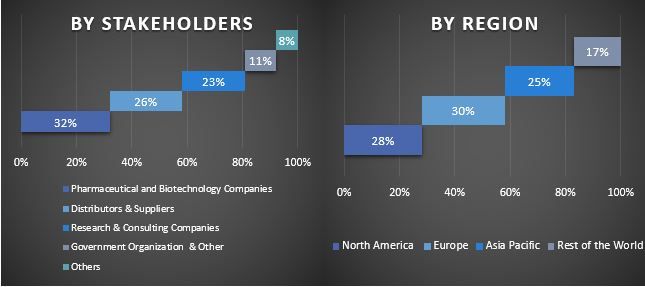
Market Engineering
The data triangulation technique was employed to complete the overall market estimation and to arrive at precise statistical numbers for each segment and sub-segment of the global autism spectrum disorder market. Data was split into several segments and sub-segments after studying various parameters and trends in the drug class, type, and distribution channel, and regions in the global autism spectrum disorder market.
The main objective of the Global Autism Spectrum Disorder Market Study
The current & future market trends of the global autism spectrum disorder market were pinpointed in the study. Investors can gain strategic insights to base their discretion for investments on the qualitative and quantitative analysis performed in the study. Current and future market trends determined the market’s overall attractiveness at a regional level, providing a platform for the industrial participant to exploit the untapped market to benefit from a first-mover advantage. Other quantitative goals of the studies include:
- Analyze the current and forecast market size of the global autism spectrum disorder market in terms of value (USD). Also, analyze the current and forecast market size of different segments and sub-segments.
- Segments in the study include areas of the drug class, type, distribution channel, and regions.
- Define and analyze the regulatory framework for the industry.
- Analyze the value chain involved with the presence of various intermediaries, along with analyzing customer and competitor behaviors of the industry.
- Analyze the current and forecast market size of the global autism spectrum disorder market for the major regions.
- Major countries of regions studied in the report include Asia Pacific, Europe, North America, and the Rest of the World
- Company profiles of the global autism spectrum disorder market and the growth strategies the players adopt to sustain in the fast-growing market.
- Deep dive regional level analysis of the industry.
Frequently Asked Questions FAQs
Q1: What is the global autism spectrum disorder market’s current market size and growth potential?
Q2: What are the driving factors for the growth of the global autism spectrum disorder market?
Q3: Which segment has the largest share of the global autism spectrum disorder market by drug category?
Q4: What are the emerging technologies and trends in the global autism spectrum disorder market?
Q5: Which region will dominate the global autism spectrum disorder market?
Related Reports
Customers who bought this item also bought







